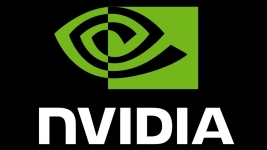Sandeep Gupte, Senior Director of NVIDIA Professional Solutions Group
HPC Review : What products are you announcing ?
Sandeep Gupte : We are announcing a multi-product roadmap to bring unprecedented creation capabilities to millions of designers. It has three main pieces:
- Iray 2015 — the latest version of our GPU-accelerated rendering software, with new features to support exchanging materials across design applications, scalability outside of a workstation and much faster rendering speed.
- Quadro M6000 — our most powerful professional GPU, featuring our Maxwell architecture and 12GB of graphics memory to support complex designs.
- Quadro Visual Computing Appliance — upgraded with eight M6000-class GPUs, this scalable appliance achieves unprecedented speed and visual fidelity, and is specifically tuned to accelerate our Iray software.
All these products will work together to give designers in a vast array of industries power that was — until now — available to just a handful.
What is NVIDIA Iray ?
NVIDIA Iray is a highly interactive and intuitive physically based rendering technology that generates photorealistic imagery by simulating the physical behavior of light and materials. Unlike traditional production renderers, Iray delivers results reflecting real-world behaviors. Designers don’t need expert knowledge of computer graphics techniques to quickly achieve photorealistic results. Iray progressively refines its image until completion, providing consistent results from interactive editing to final frame. It’s a highly predictive approach that marries with the scalable, world-class performance across NVIDIA GPUs to give constant feedback and rapid results. This slashes the time needed to perfect scenes and deliver images rivaling photographs.
Who is Iray aimed to ?
Iray is primarily for designers and visual effects artists working with 3D content who require predictable photorealistic imagery. It delivers immediate visual feedback that results in stunning imagery for everything from architecture, engineering, and design to marketing and advertising visual effects.
Can you describe Iray’s main features ?
NVIDIA Iray rendering simulates real world lighting and practical material definitions so that anyone can interactively design and create the most complex of scenes. Predictable and physically based immediate visual feedback results in stunning imagery for architecture, engineering and design to marketing and advertising visual effects.
Iray consists of three rendering modes, Photoreal, Interactive and Realtime to produce varying degrees of physically based and photorealistic imagery with different performance characteristics. The rendering modes can be customized with unique parameters to achieve the desired interactivity and photorealism required for your application. They offer a seamless user experience when switching between rendering modes as each mode uses the same scene and material descriptions stored in memory within the Iray database.
Iray Photoreal
Iray Photoreal is a high-performance, global illumination rendering mode that generates photorealistic imagery by simulating the physical behavior of light interaction with surfaces and volumes. Iray balances ease of use with the highest achievable quality for photorealistic final frame output. Images are progressively refined to provide the full global illumination including caustics, sun studies and luminance distributions.
Compositing elements that isolate lighting components using a technique called Light Path Expressions (LPE) and saved to output buffers are now available in Iray. Rendering the compositing elements are done in parallel with the final image output. The buffers can be edited in post-processing using standard imaging or compositing software and the results can be integrated into the final output image without time consuming and expensive re-rendering. Iray generates the standard scene specific render elements such as alpha channel, z-depth, normals, texture coordinates, material id, object id and irradiance. Common LPEs elements are: indirect illumination, direct diffuse, direct specular, indirect diffuse, sub surface scattering, caustics and many more. LPEs can be defined on a per object and per light basis allowing for complete creative control in post.
Iray Interactive
Iray Interactive rendering mode uses advanced approximation algorithms to mimic realism while minimizing unwanted noise – maximizing performance during interaction. Path space filtering, a technique to intelligently remove noise in the final frame during navigation and interaction is available for Iray Interactive. Other computationally expensive features such as indirect light can be kept on or off to support noise free interactive frame rates with single GPU systems. The ability to adapt quality to the type of GPU being used ensures that the Interactive render mode can deliver suitable image quality during interactive tasks. Iray Interactive can render screen space ambient occlusion effects generating more realistic and physically plausable results interactively.
Iray Realtime
Iray Realtime is an OpenGL render mode which uses coventional GPU raster techniques to achieve realtime rendering speed. Iray Realtime targets a look for the materials that is closely matching the look in the other render modes. However, it has limitations when it comes to accurate reflections and refractions as well as lighting simulations. Iray Realtime leverages OpenGL 3.3 and NVIDIA extensions. It is ideal where rendering speed or large display support has priority and limited photorealism is acceptable.
A scalable rendering solution
With Iray, we bring Interactive, Scalable, Physically Based Rendering to Millions. Throughout 2015, NVIDIA will bring Iray to several more 3D creation applications, including Autodesk’s 3ds Max, Maya, Revit and McNeel Rhinoceros. DAZ 3D has also made Iray available to its customers. This means millions of designers will now have access to Iray’s capabilities, including Iray material definition language (MDL), which allows physically based materials to be interchangeable across apps, so designers can switch from one tool to another and get consistent results. Iray 2015 is supporting the latest measurement format from X-Rite, while MDL is being supported by a growing number of companies that allow designers to create physically based materials, including Allegorithmic and Old Castle.
Multiple GPUs in one machine
Iray supports any number or combination of GPUs and CPUs running within the same machine, and gives you control over which are being used for rendering. Load balancing between GPUs of different sizes, types, and generations is automatic—often doubling offline rendering performance when doubling the number of equivalent processors. Even older systems quickly become powerful rendering nodes by adding NVIDIA GPUs. This makes multi-GPU systems the preferred choice among Iray artists. The superior performance of Iray Photoreal mode begins by using each processor in your machine to its fullest. Thorough multi-threading and SIMD optimization squeezes the most from each CPU core, while scaling across the thousands of cores within NVIDIA GPUs delivers maximum speed.
What are the new Quadro Professional Graphics Cards main features ?
The Quadro M6000 is a ultra high-end card targeted towards extreme CAD/CAM users, photorealistic rendering, extreme DCC effects and seismic and 3D medical visual exploration as well as massive GPGPU compute tasks. It features 12GB of onboard GDDR5 memory and is about 61% faster than previous generation. It featres 3072 CUDA cores versus 2880 for the K5000.
We also launched the Quadro M5000, built around the Maxwell Core and PCIe 3.0 compatible. Single precision performance is 4.3 Tflops (versus 3.6 for the K5200 built on the Kepler architecture). It has also 4 x Displayports and one DVI (versus 2 DP + 2 DVI), allowing up to four 4K displays. Power consumption is only 150W versus 225W.
The new M4000 replaces the K4200, and offers 1664 CUDA cores (versus 1344) and +50% performance in Iray with 2.6 Tflops versus 2.1. Memory has doubled to 8GB like the M5000, and up to four 4K displays can be connected simultaneously.
© HPC Today 2024 - All rights reserved.
Thank you for reading HPC Today.































